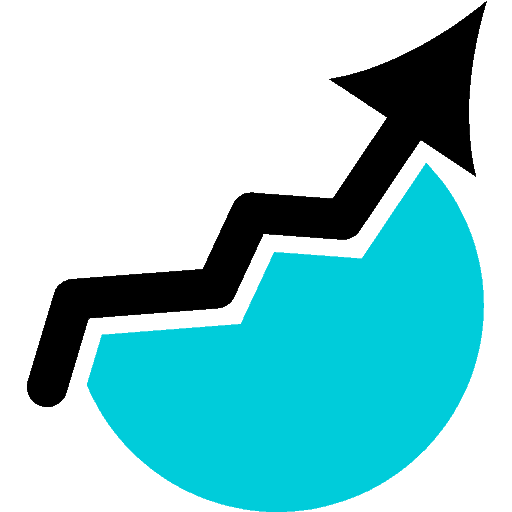5 Strategies To Make Money Blogging
So, you started a blog.
You picked out a niche that you were interested in. Wrote out a few dozen posts, then sat back and watched the money roll in.
I’m going to guess that probably didn’t actually happen.
You see, anyone can start a blog; last I heard, there were something like 100 million blogs worldwide, but the hard part isn’t in starting the blog – it’s in turning the blog into a viable business.
After six months or even a year of constant work creating content and promoting a blog, most blogs still don’t make more than a few measly cents each month.
It may be hard to hear, but it’s true – most blogs are dead in the water.
So what’s the “secret” – how do you make a blog that actually makes money?

How Do Most People Think They Will Make Money Blogging?
When most people think about blogging, they picture someone writing out a few blog posts about something they love or have a lot of knowledge about, hooking up some standard Google Adsense ads to their site, then just collecting checks.
But the truth is, unless your blog is getting an incredible amount of views every single day, you just won’t be making much if any money that way.
For example, to make $100 a day (which many working people see as the minimum needed to quit their day job) – you would need to get about 70,000 views that day. To make this amount every day, you would need to get 70,000 views every day. And these have to be real genuine views, as in people who spend some time on your site reading your content. 70,000 views a day is over 2 MILLION views a month.
The average successful blog generating a full-time income for the people running it gets about 50-100 thousand views a month.
So it’s safe to say they aren’t making their money from Google AdSense, maybe they make some money that way, but it is by no means how actual bloggers make the lion’s share of their income.
How Do You Actually Make Money Blogging?
The primary ways most blogs actually make money are:
- Affiliate Marketing
- Online Courses & Workshops
- Ebooks
- Consulting & Coaching Services
- Selling a Service
You don’t need to do all of these things. In fact, it’s probably better when starting out to focus on one of them, and once that is running on auto-pilot, you can consider expanding your blog into other areas.
Here at Great Plan Ray, we primarily fall into that last category, with our blog simply being one tool in our business plan writing and business consultation services.
On top of that, we also do some affiliate marketing through specific trusted partners that offer a service or course that we have either used in the past or use as an ongoing piece of managing our business.

The 5 Keys To Create a Blog That Makes Money
Whether you’re a new blogger, a skilled blog writer trying to find some encouragement, or considering beginning your own blog site, I want you to understand that you can develop a successful blog site of your very own. If I figured out how to do it, you can too!
The five keys that follow are verified methods to create an income-producing blog. I’ve learned them through experimentation, examining various other blogs, and also testing them myself.
Basically:
These five keys all work as long as you put in the work.
1. Choose the Right Blogging Niche For You
The first step in starting a blog is picking a niche. Your niche is basically the subject you will be blogging about. What will you write about? What information are you looking to convey? Will it be about a specific industry? Maybe it will be about a certain area of skills or personal development?
It’s important to note that;
- Passion does not equal profit.
- Neither does expertise.
- Hard work doesn’t guarantee anything either.
For example, maybe you’re super interested in underwater basket weaving, and you could talk about it for hours and write thousands of blog posts about it. The thing is, it’s just not something many people are going to be looking to learn more about.
The face is that the blog’s appeal can only be as large as the total global audience that the topic has. You need to develop something with a large audience, one that buys things related to the niche.
And you want a niche that isn’t going to go out of style in a few years; what you’re looking for is a niche that has what we call “evergreen content.”
Evergreen content is always relevant, and because people’s interest in the topic isn’t going to fluctuate, it’s a stable way to earn an income.
The right blogging niche for you is a balance between a topic you are interested in and would like to write about regularly, and that is popular enough that other people will actually want to read articles about the topic.
2. Give People What They Want
Certainly, building relationships with your readers is a two-way street. They need to recognize and trust you, and you need to understand them and what they want to ensure you’re providing content that will help and entertain them.
Think about the people who visit your website. What are their desires? Their fears? What do they struggle with, and what could you do to help alleviate those struggles? It ends up being much easier to provide valuable content that will keep visitors coming back for more if you can respond to these concerns on your own and assist your visitors in addressing their problems.
Jump into your Google Analytics and see which articles and topics get most of your web traffic and ask yourself what those blog posts were different from the other ones on your site, which made those stand out. Through this, you’ll be able to tailor-make your content for your audience and provide people with real value.
3. Build An Email List
An email list is exactly what it sounds like, a list of email addresses from people who gave you permission to send them updates and promotions from your business.
Email is a uniquely powerful tool for any blogger, as it is:
- Personal: Messages from you are landing directly in your subscribers’ inbox, potentially coming alongside a notification of that new email popping up on their phone – which they likely bring with them everywhere.
- Targeted: These aren’t just random people you are emailing; these are people who’ve come to your website before, liked your content and free offer enough to sign up to an email list, and so far, they haven’t felt the need to unsubscribe from you meaning they still like your content.
- One on One: Posting an update on Twitter or dropping a video on YouTube places you in an environment surrounded by competition. Email, on the other hand, is kind of private. People reading your email aren’t a distracted as people watching a video on YouTube where the entire right side of the screen (on desktop) or just below your video on mobile is a huge selection of competitors just waiting to steal the eyes of your audience.
- Yours: Your email list is one of the few things you own, YouTube channels can get deleted, even entire websites can crash, people may stop people may permanently stop logging into their MySpace account, but most people stick with the same primary email address for years and years. You own your email list, a unique collection of people who’ve shown direct interest in your blog.
In short, having an email list gives you the opportunity to change a one-time visitor into a regular visitor by being able to message them directly when you post something they may be interested in.
There are many Email Marketing services available to help you build an email list; the one we use here at Great Plan, Ray, is called MailerLite. They offer an easy-to-use email editor, great form-building tools, and an incredible free option where you don’t have to pay a dime for your first 1000 subscribers.
And since the first 1000 email subscribers are by far the hardest to get having an email building tool that is entirely free for that early list-building stage can make all the difference between building a profitable blog and making one that is a money pit. Check them out here.

4. Promote Your Blog
People aren’t just going to stumble onto a brand-new blog. It takes a long time for SEO to kick in, and even in the best-case scenario, a new blog probably won’t show up anywhere close to the first page on Google for at least 6 months, and even then, Google favors sites that already have traffic going to them.
It’s a bit of a catch 22 – you need to show up in search results to get traffic, but without traffic, you’re unlikely to ever show up in search results.
This is where blog promotion comes in.
Share New Posts on Social Media
Sharing your content on social media is still an excellent way to increase traffic to your blog. But it’s not just as simple as just posting a link to your new post on Facebook and then moving onto something else.
The thing is, unless you already have thousands of people hanging on your every word, a random status update linking to your new blog post is unlikely to get more than five or six link clicks. This is why you need a real social media strategy.
Start by figuring out with social media sites having audiences most likely to be interested in your content. Are there Facebook groups that you could join that might be interested in your site? What about subreddits on Reddit?
A post on a relevant Facebook group, particularly one you spend time engaging with other people’s comments or posts, will get way more traction than just throwing a link to your blog into one of your status updates on your personal page.
Consider what forums you could become a member of, what Pinterest groups you could join, and what hashtags you could use on Instagram and Twitter.
Over time you’ll get better at knowing where your content does better and where it’s not worth spending the time posting, but depending on your niche, it can take a bit of experimenting to see what social media sites work best.
Email Your List
The people who subscribed to your email list did so because they like your content; when you have some new content, it only makes sense to send them a quick email letting them know.
Of course, depending on how frequently you post new material you don’t want to over-do emailing your list, try to keep emails to a maximum of once a day to avoid alienating your list. Even if all of them are helpful, many emails can sometimes set off red flags and lead to your emails ending up in the spam folder so make sure to make every email count.
If you’re just getting started and don’t yet have any email subscribers, this part of this blog promotion strategy won’t apply to you; instead, keep your focus on social media promotion and possibly some paid promotion.
Paid Marketing
Running paid advertising campaigns can be a great way to get more traffic to your site; if you aren’t careful, it can quickly become a waste of money.
Prior to running ads, there are a few things you need to have in place:
- A lead-generating offer set-up so you can build an email list (A form or pop-up where people can type in their email and subscribe to your blog, usually in exchange for a free ebook, report, or some kind of expanded service)
- Blog Monetization – Whether it’s Google Adsense or links to Affiliate products, increase your chance of seeing a direct short-term return on your investment by having a way for you to make money already set-up on your blog.
- Quality Content that people who visit your blog will want to share – turn each person who came to your blog through an ad they saw on social media into a promoter by having content they will want to share.
Where you run ads will depend on your site’s niche, but Facebook, Instagram, Pinterest, Google, and YouTube are all effective platforms to run ads on. They each are extremely beginner-friendly, and I recommend starting out with spending no more than FIVE dollars a day on ads and letting the ad run for at least 4 days – this is a total investment of just $20. From that, you’ll be able to tell whether or not the ad in question is working for you.
Remember that you aren’t likely to make back the money you spend on ads instantaneously with blogs. It’s a bit of a long game. While you want to have your blog already fully monetized so that you can potentially make some money right away – the real goal of running ads is to get traffic to your blog and to convert that traffic into subscribers by having them sign up for your email list.
It’s important to think about this stuff over a long time-frame, consider how much a subscriber is worth to you over a year (this will depend on what product or services you primarily promote).

5. Promote Affiliate Offers That You Believe In / Create Your Own Product
One of the best ways to generate money from your blog is affiliate marketing. This is where you recommend the services, digital products, and physical products of other companies in exchange for a commission on each sale that you generate for them.
This is a core part of establishing a successful blog in the majority of niches. Successfully navigating this facet of blog writing is crucial in determining whether your blog is just a hobby or a real business.
One of the most typical errors bloggers make is promoting way too many items or the wrong products to their visitors. I have found out that it is much more reliable to focus on a small group of products and services that are related to the main service of Great Plan Ray.
As you may know (or not), this website started as an after-thought after many years of developing Business Plans for entrepreneurs and struggling small businesses as a freelancer – it was only later that this site expanded into a full-blog and we began partnering with other companies to offer related products (usually business tools, web hosts, and training programs that help people grow businesses – all related to our main focus without taking away from it.)
If you’re continuously growing your email list and improving your affiliate advertising methods, the next action to take is developing your own product. (For us, we started with our own service and then went backward, but for the vast majority of bloggers, the starting point is the blog, and creating their own product or service is down the line a bit.)
Creating your own product can be incredibly difficult, as well as an extensive job. Depending on your niche, it may take a lot of brainstorming just to come up with what your offer could and should be. Hopefully, after developing your blog and building an email list, you have a strong understanding of your audience’s wants and needs, which will help you understand the perfect product or service for them.
The Bottom Line
It takes time to build and patience a profitable blog, and like anything worthwhile, it’s hard work getting there. To paraphrase Jay-Z;
“you can hustle ‘caine,
hustle clothes,
or hustle music
but hustle hard in any hustle that you pick.”
If you follow these 5 keys to creating a blog that makes money and you really put in the time and effort needed, success is yours for the taking.
- How to Save Money on Marketing (Without Scaling Back) - October 15, 2022
- Become Your Own Marketing Department With These Essential Tips - October 5, 2022
- The 100 Best Money Quotes of All Time - August 16, 2022








